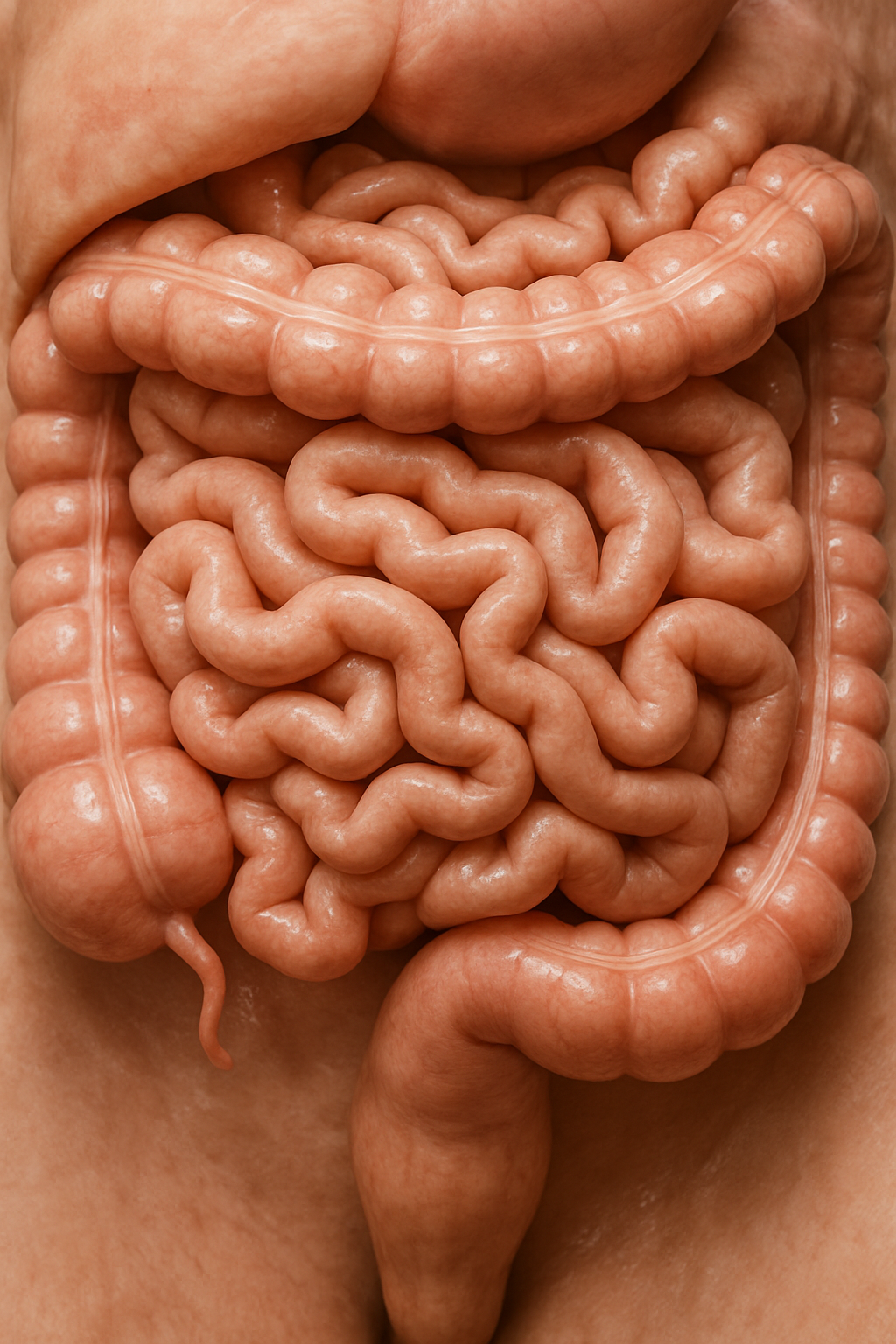A thriving gut microbiome is the cornerstone of overall well-being—impacting digestion, immunity, mental health, and even weight management. But with an endless array of probiotic foods on supermarket shelves and countless prebiotic supplements, how do you know what really works? Whether you’re in the United States, the United Kingdom, or anywhere in the world, this interactive, science-backed guide will walk you through the latest data, simple hacks, and trusted resources to optimize your Gut Health and Probiotics regime.
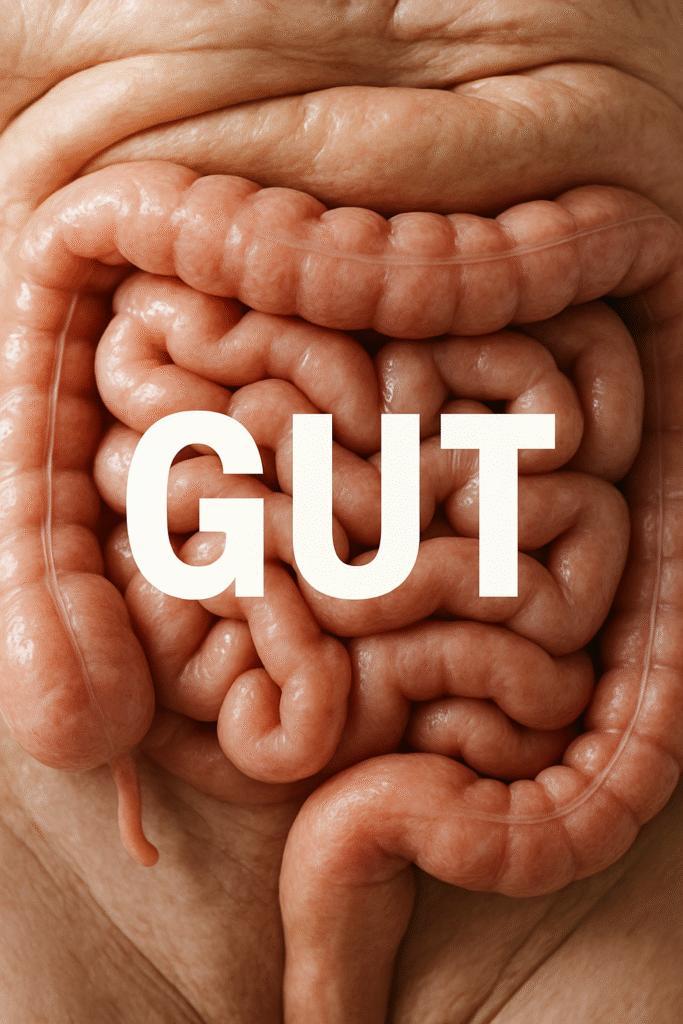
Table of Contents
- Why Gut Health Matters
- Global, US & UK Gut Health Trends
- Understanding Probiotics vs. Prebiotics
- Top 10 Probiotic Foods to Add Today
- Effective Prebiotic Supplements & Foods
- Simple Hacks for a Happier Gut
- Interactive 4-Week Gut Reset Plan
- When to See a Professional
- Trusted Government & Health Links
- Disclaimer
Why Gut Health Matters
Your gut hosts trillions of microorganisms—collectively known as the microbiome—that perform vital functions:
- Digestion & Nutrient Absorption: Break down complex fibers into beneficial short-chain fatty acids (SCFAs).
- Immune Regulation: Nearly 70% of your immune cells reside in the gut, where a balanced microbiome helps defend against pathogens.
- Mood & Brain Health: The gut-brain axis communicates bidirectionally; a healthy microbiome can boost mood and cognitive function.
- Metabolic Balance: Gut bacteria influence appetite, blood sugar, and energy metabolism—key factors in weight management.
Neglecting your gut can lead to bloating, constipation, diarrhea, food intolerances, increased infection risk, and even mood disorders like anxiety or depression.
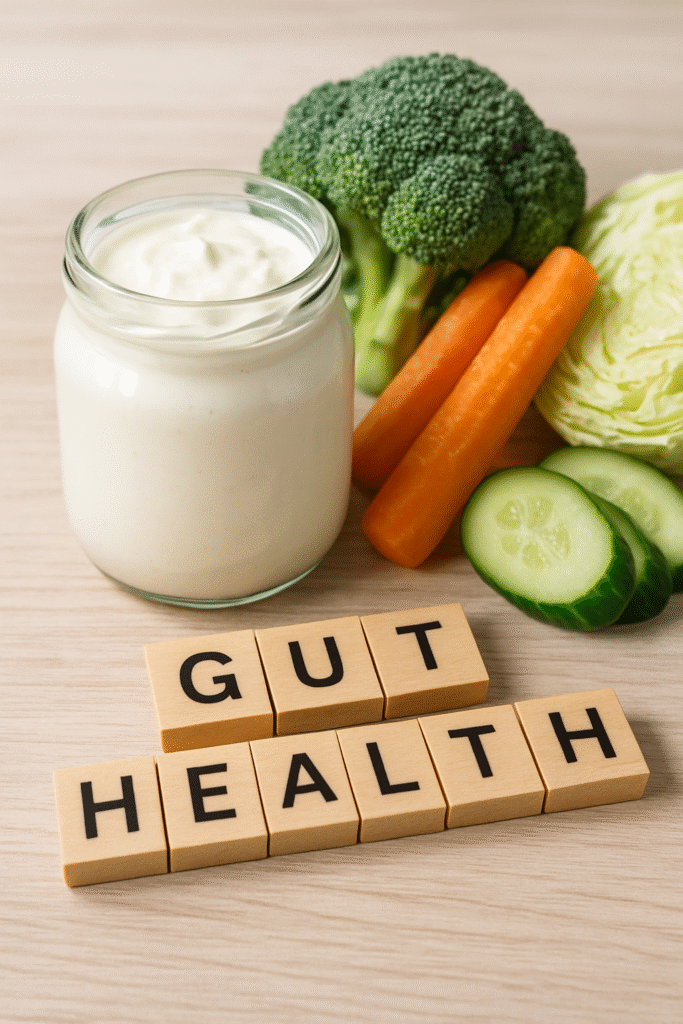
Global, US & UK Gut Health Trends
Worldwide
- The global probiotic supplements market is projected to exceed USD 78 billion by 2028, up from USD 55 billion in 2023, reflecting rising consumer interest in gut health.
- Diets high in ultra-processed foods, low in fiber, and heavy on sugar are contributing to decreased microbiome diversity globally.
United States
- 60–70% of Americans report experiencing at least one digestive symptom—bloating, gas, or irregularity— every month.
- A 2023 survey found that 40% of U.S. adults take a probiotic supplement, while 75% consume at least one fermented food weekly.
United Kingdom
- In the UK, 1 in 4 adults struggles with gut discomfort such as irritable bowel syndrome (IBS)–like symptoms.
- Sales of probiotic-enriched yogurts and kombucha have doubled over the past five years, indicating growing acceptance of functional foods.
Understanding Probiotics vs. Prebiotics
| Term | Definition | Role in Gut Health |
|---|---|---|
| Probiotics | Live microorganisms (bacteria or yeast) that confer health benefits when consumed in adequate amounts. | Colonize the gut, enhance barrier function, and out-compete pathogens. |
| Prebiotics | Non-digestible fibers (e.g., inulin, fructooligosaccharides) that feed beneficial gut microbes. | Promote growth of beneficial bacteria, boost SCFA production. |
Both are essential: probiotics introduce new, beneficial strains, while prebiotics nourish and sustain your existing microbiome.
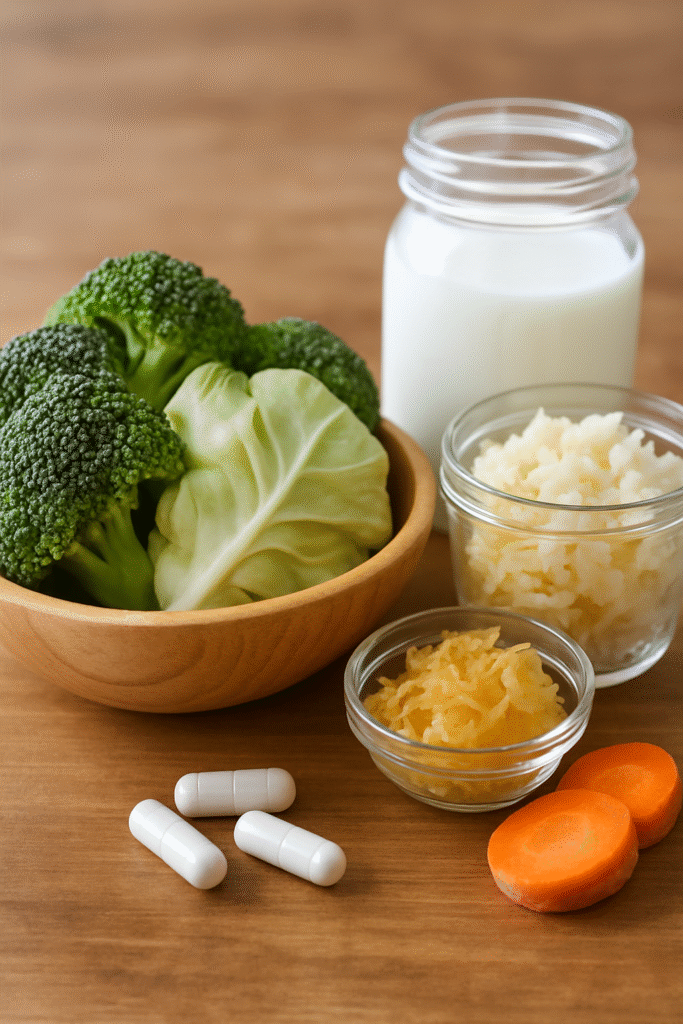
Top 10 Probiotic Foods to Add Today
- Yogurt
- Look for live or “active” cultures (Lactobacillus and Bifidobacterium).
- Contains calcium and protein.
- Kefir
- Fermented milk drink with up to 30 probiotic strains.
- Often tolerated by lactose-sensitive individuals.
- Sauerkraut
- Fermented cabbage rich in Lactobacillus.
- High in vitamin C and fiber.
- Kimchi
- Korean staple of fermented vegetables (cabbage, radish).
- Spicy, vitamin-packed, and rich in lactic acid bacteria.
- Kombucha
- Fermented tea beverage; contains yeast and bacteria.
- Choose low-sugar varieties.
- Miso
- Traditional Japanese paste from fermented soybeans.
- Adds umami flavor and beneficial microbes to soups and dressings.
- Tempeh
- Fermented soybean cake; complete plant protein.
- Rich in B vitamins and probiotics.
- Pickles (lacto-fermented)
- Cucumbers fermented in brine (not vinegar).
- Crunchy source of probiotics and electrolytes.
- Traditional Buttermilk
- The liquid left after churning butter; contains live cultures.
- Lower fat than yogurt.
- Fermented Cheese
- Varieties like Gouda, mozzarella, and cheddar can contain live cultures—verify label.
Interactive Tip: Create a “Probiotic Plate” by combining at least two of these foods in one meal—e.g., yogurt parfait with miso-marinated tempeh and kimchi slaw.
Effective Prebiotic Supplements & Foods
While many get enough prebiotics from whole foods, targeted supplements can help during a gut reset.
Prebiotic-Rich Foods
- Garlic & Onions: Contain inulin and fructooligosaccharides (FOS).
- Leeks & Asparagus: Excellent sources of inulin.
- Bananas (unripe): Higher in resistant starch compared to ripe bananas.
- Oats & Barley: Beta-glucan fibers feed Bifidobacteria.
- Apples: Pectin fiber promotes SCFA production.
Top Prebiotic Supplements
| Supplement | Form & Dose | Notes |
|---|---|---|
| Inulin Powder | 3–5 g/day | Mix into smoothies or yogurt. |
| Fructooligosaccharides (FOS) | 2–4 g/day | Gentle on the stomach; start low to avoid gas. |
| Galactooligosaccharides (GOS) | 2 g/day | Supports Bifidobacteria growth. |
| Resistant Starch (RS2/RS3) | 10–20 g/day | Found in potato starch; may require gradual increase. |
Safety Note: Increase prebiotic intake slowly, over 1–2 weeks, to minimize bloating or discomfort.
Simple Hacks for a Happier Gut
- Diverse, Plant-Forward Diet
Fill half your plate with colorful fruits, vegetables, legumes, nuts, and seeds to feed diverse microbes. - Stay Hydrated
Aim for 8–10 cups (2–2.5 L) of water daily—fluids help move fiber through the digestive tract. - Move Regularly
Exercise boosts gut motility and increases beneficial bacteria strains; aim for 30 min of moderate activity most days. - Prioritize Sleep
Poor sleep disrupts your microbiome; stick to 7–9 hours of quality sleep each night. - Mindful Eating
Chew thoroughly, eat slowly, and avoid multitasking to reduce bloating and improve nutrient absorption. - Manage Stress
Chronic stress alters gut permeability; incorporate breathing exercises, yoga, or meditation into your daily routine.
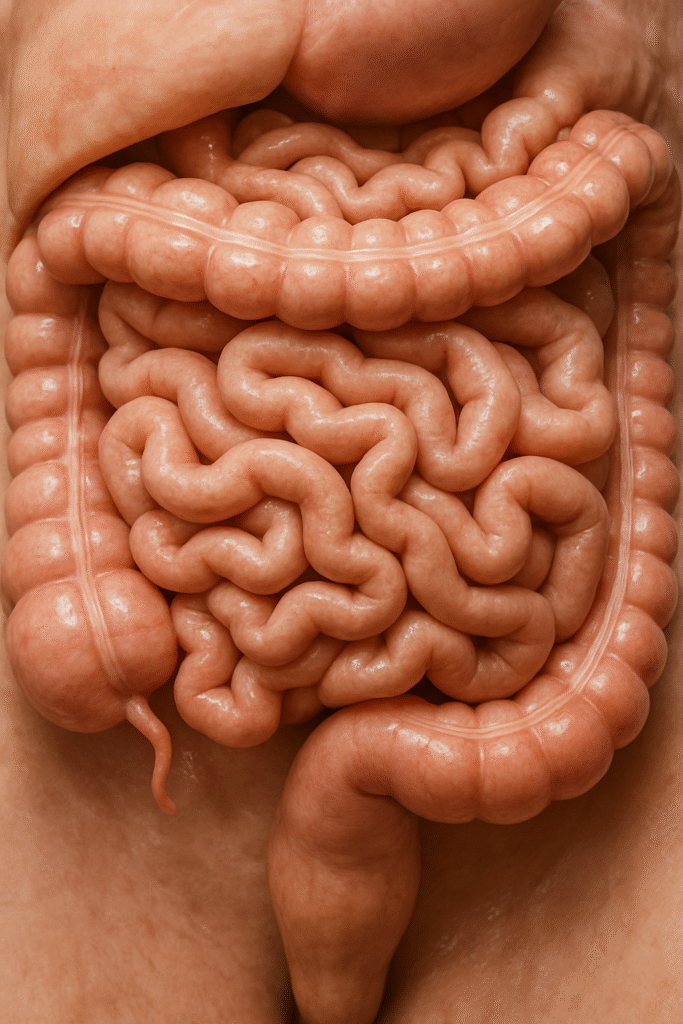
Interactive 4-Week Gut Reset Plan
| Week | Focus | Action Steps |
|---|---|---|
| 1 | Probiotic Foundations | Add 1 probiotic food/day (rotate types) + track symptoms |
| 2 | Prebiotic Boost | Introduce 1 high-fiber/prebiotic food + 3 g supplement daily |
| 3 | Lifestyle Alignment | Implement daily exercise (+10 min) + 8 cups water + sleep log |
| 4 | Assessment & Adjustment | Review gut diary; tweak foods/supplements based on tolerance |
Your Challenge: Download or screenshot this table. Keep a simple gut journal—note meals, supplements, bowel habits, mood, and energy levels—to refine your custom plan.
When to See a Professional
Consult a healthcare provider if you experience:
- Persistent Digestive Symptoms: Severe bloating, pain, diarrhea, or constipation lasting >2 weeks.
- Unexplained Weight Changes: Rapid loss or gain.
- Nutrient Deficiencies: Signs like anemia, hair loss, or chronic fatigue.
- Autoimmune Conditions: IBD (Crohn’s disease, ulcerative colitis) or celiac disease.
A registered dietitian or gastroenterologist can perform tests (breath tests, endoscopy, stool analysis) and tailor a gut-healthy protocol.
Trusted Government & Health Links
- USDA Dietary Guidelines – Recommendations for fiber and fermented foods:
https://www.dietaryguidelines.gov - National Institutes of Health: Probiotics – Evidence and safety overview:
https://www.nccih.nih.gov/health/probiotics-what-you-need-to-know - NHS: Gut Health and Digestion – Tips on fiber, fluid intake, and IBS:
https://www.nhs.uk/live-well/eat-well/healthydiet/ - World Health Organization – Nutritional guidelines and microbiome research:
https://www.who.int/news-room/fact-sheets/detail/healthy-diet
Disclaimer
This blog is for educational purposes and does not replace professional medical advice. Always consult a qualified healthcare provider before starting any supplement regimen or making significant dietary changes, especially if you have underlying health conditions. Individual results may vary. All images used in this article are royalty‑free or licensed for commercial use and are provided here for illustrative purposes.
